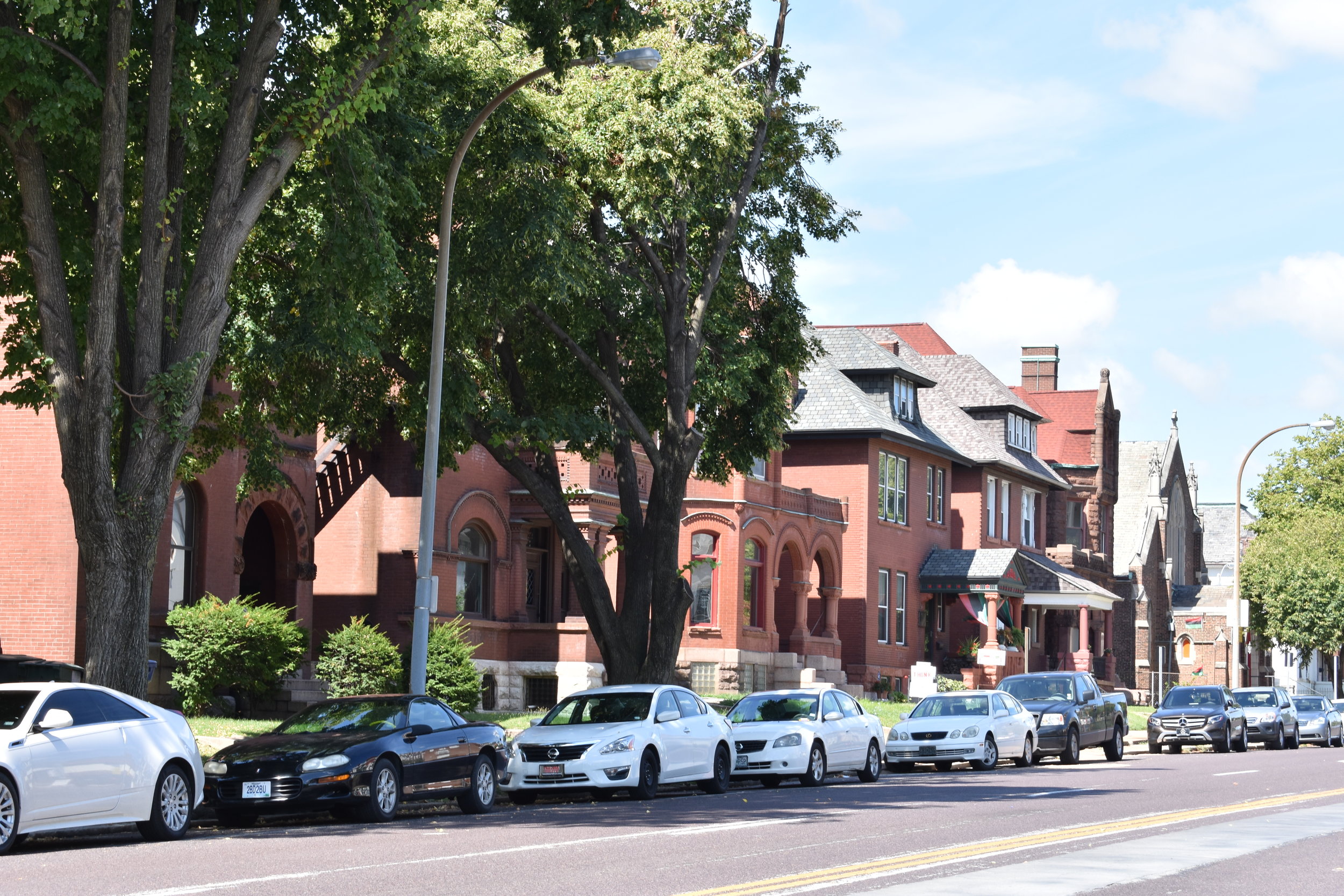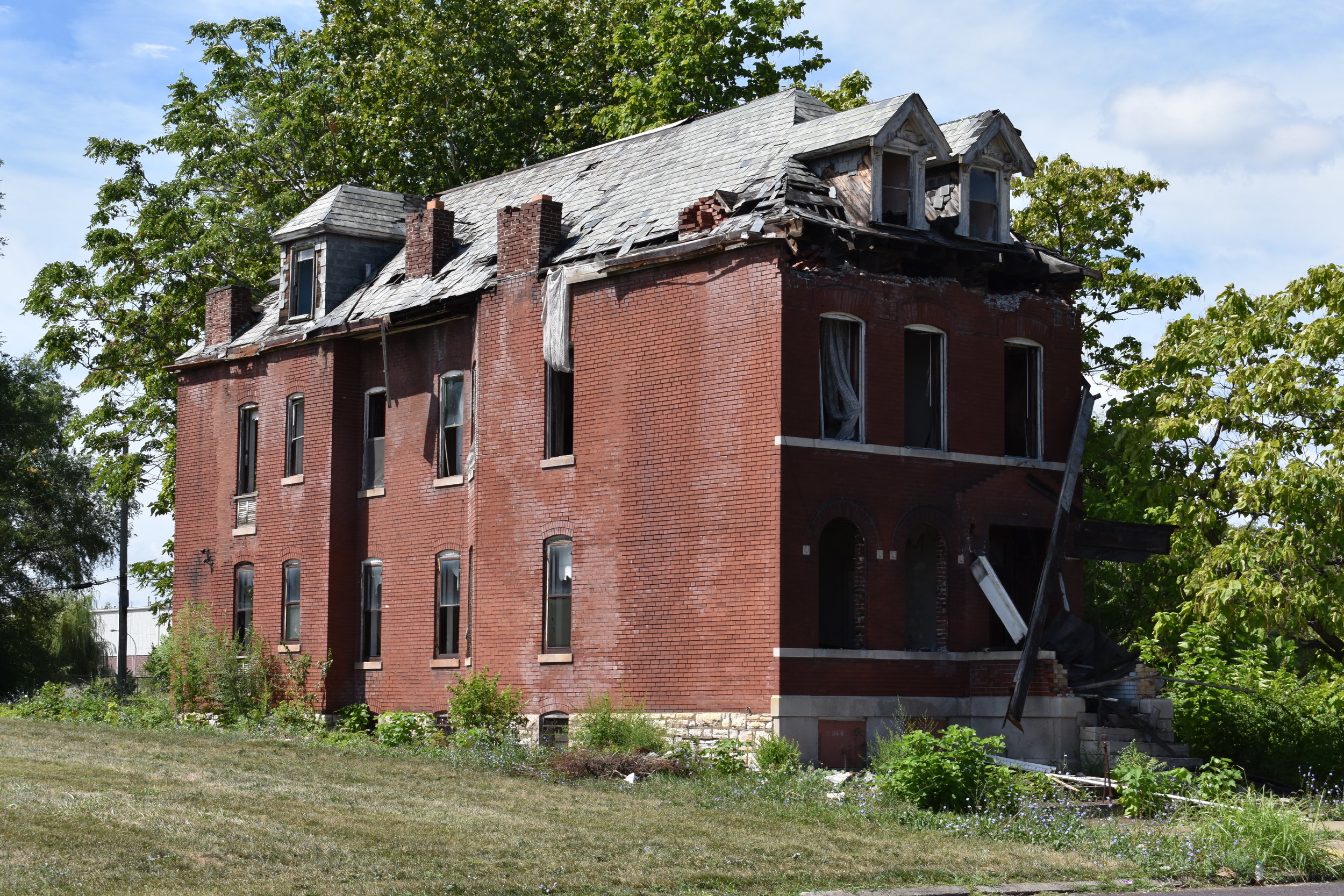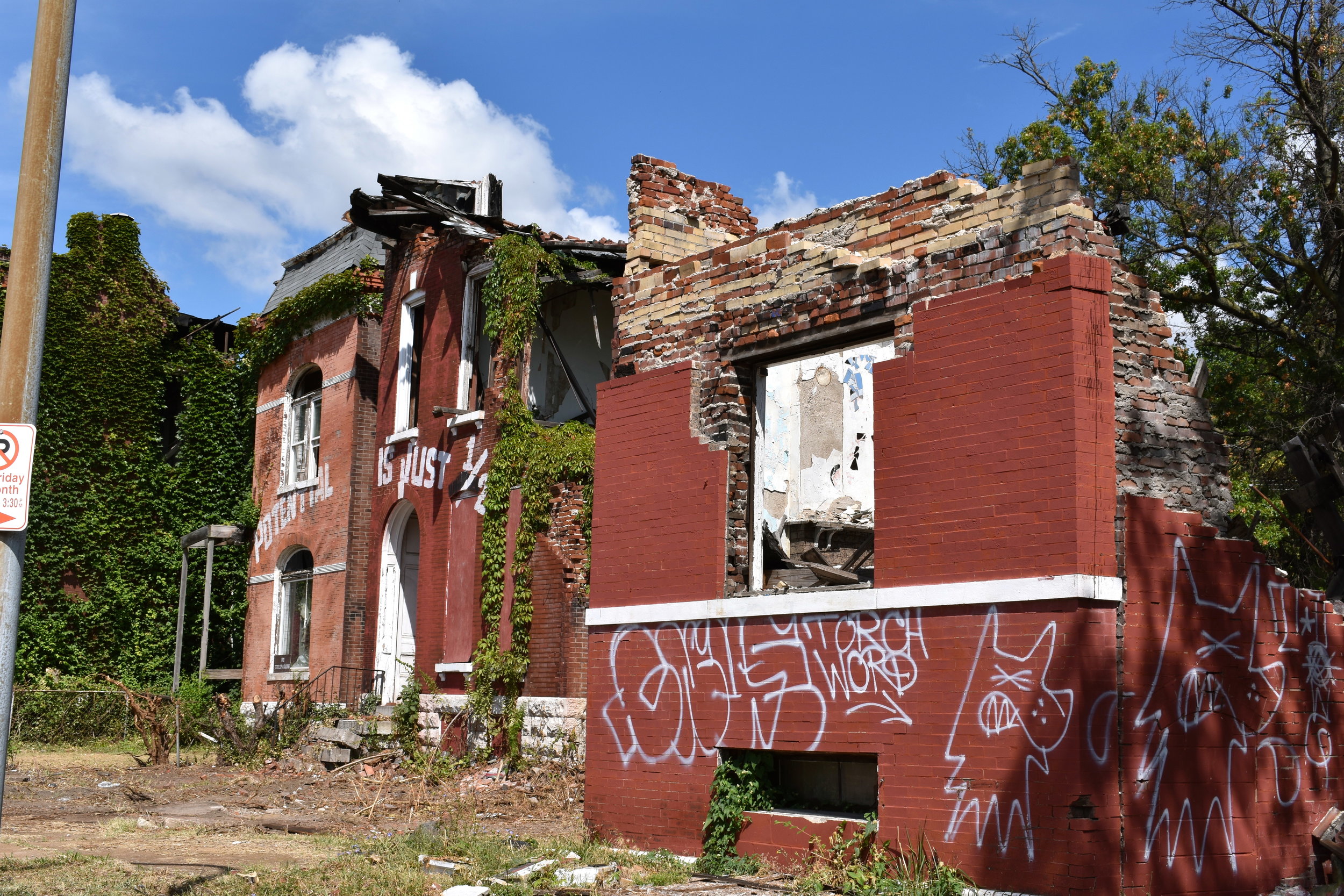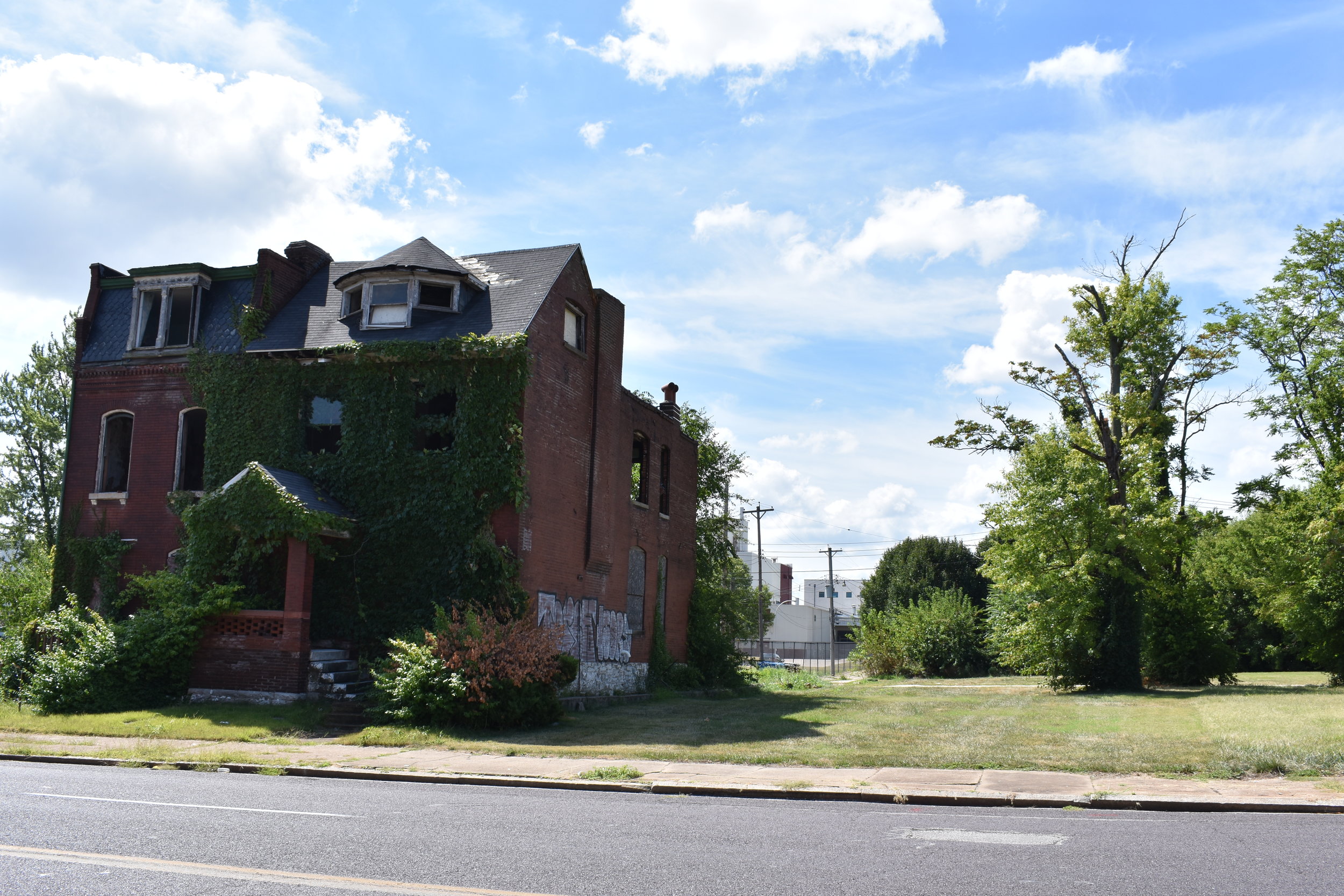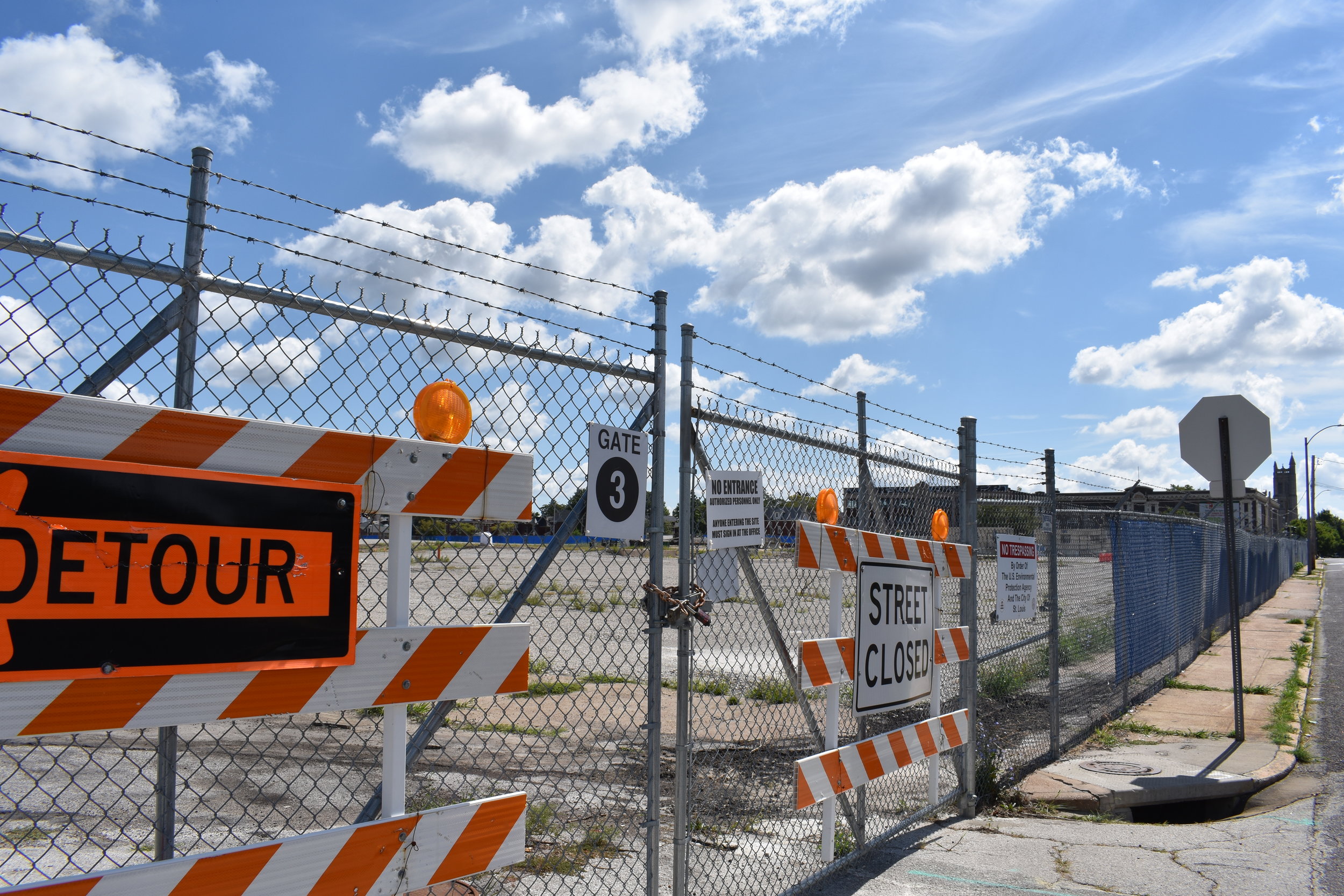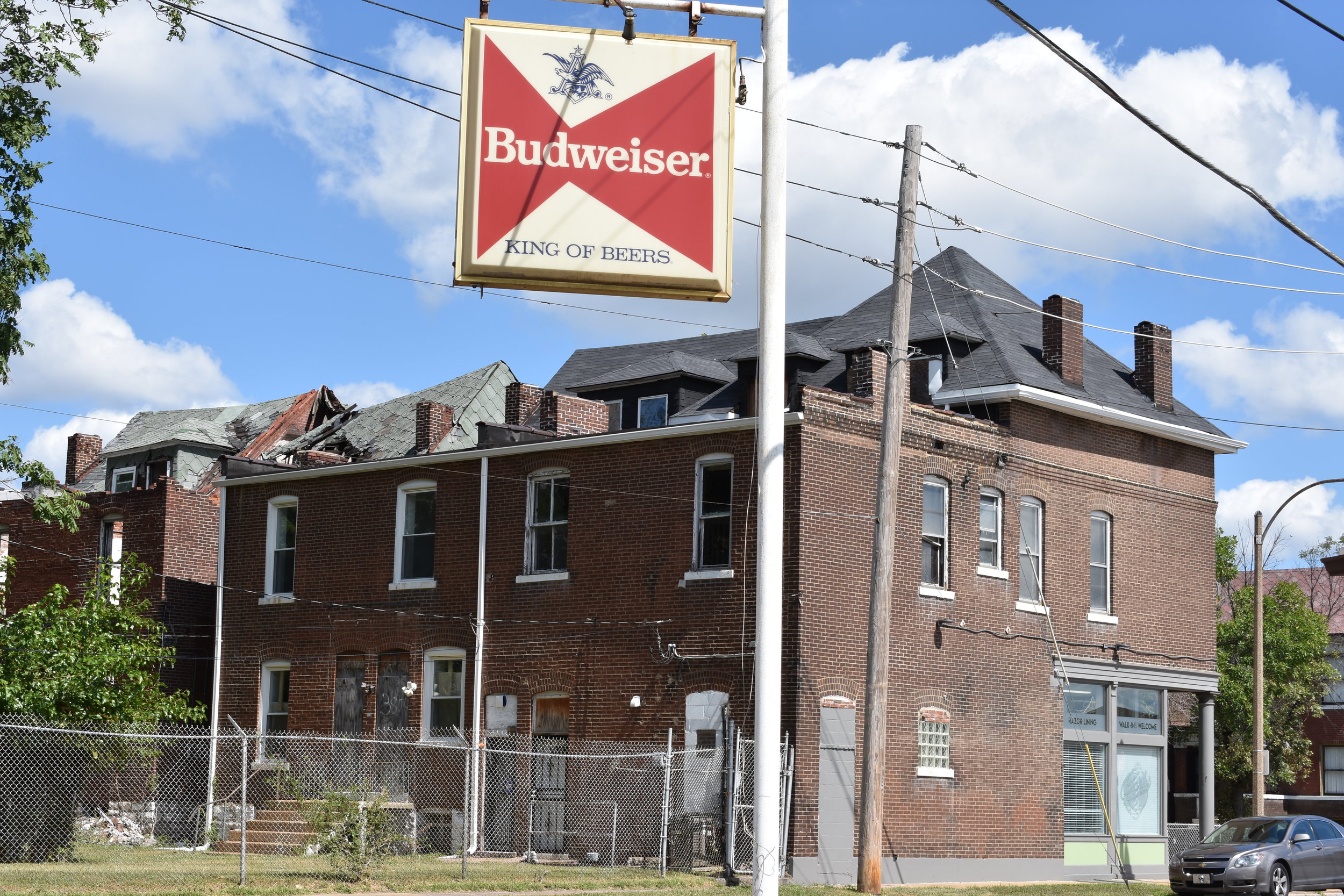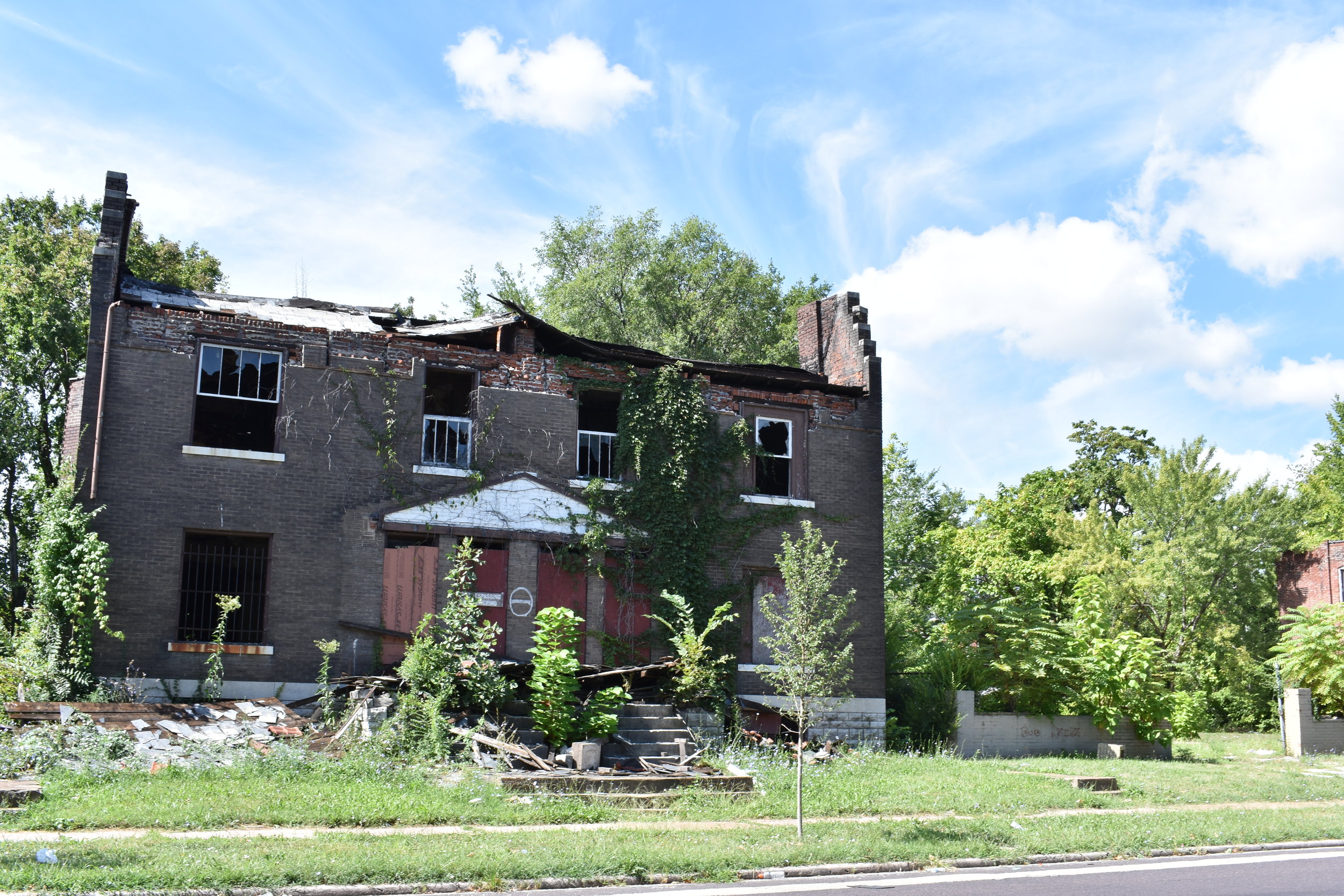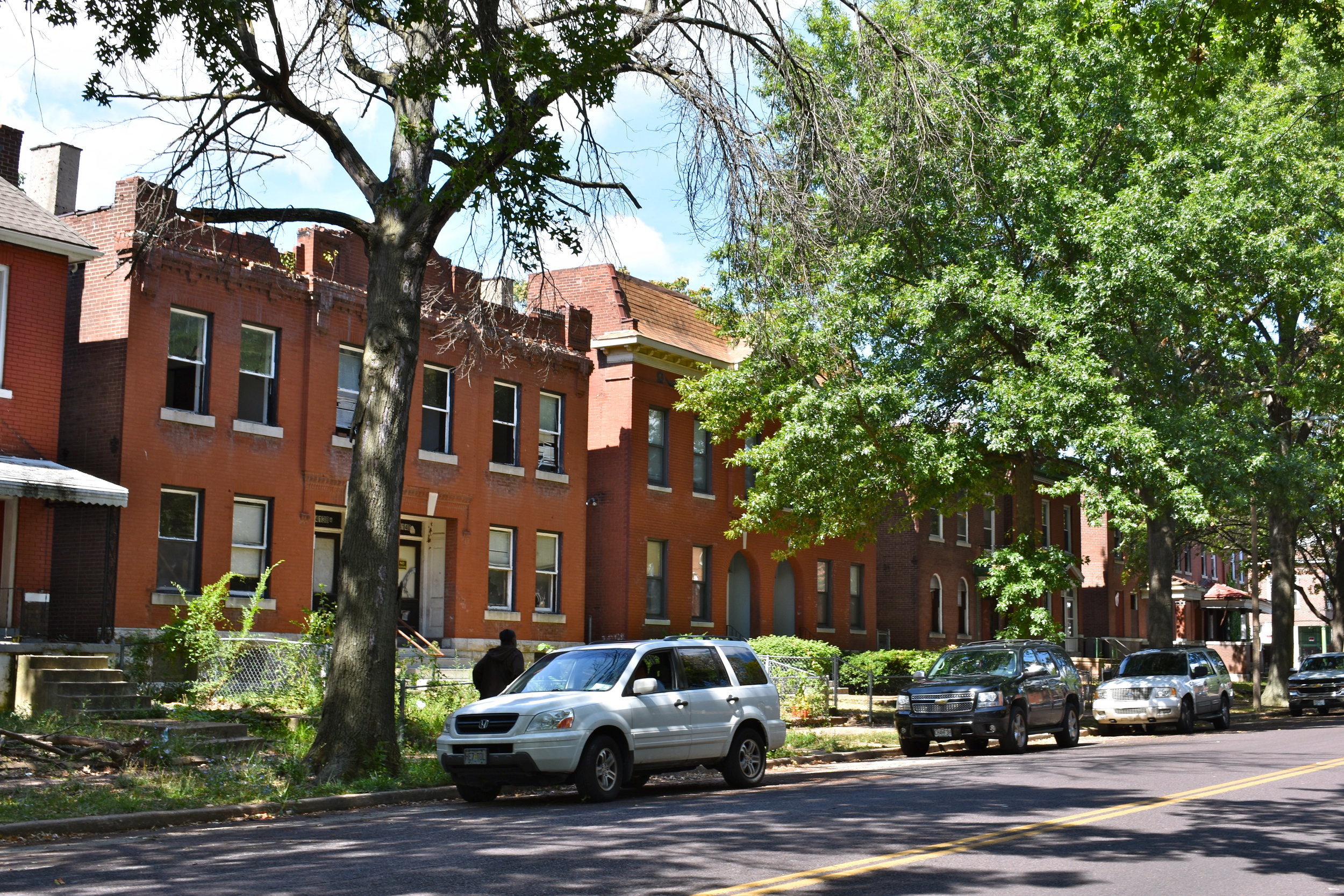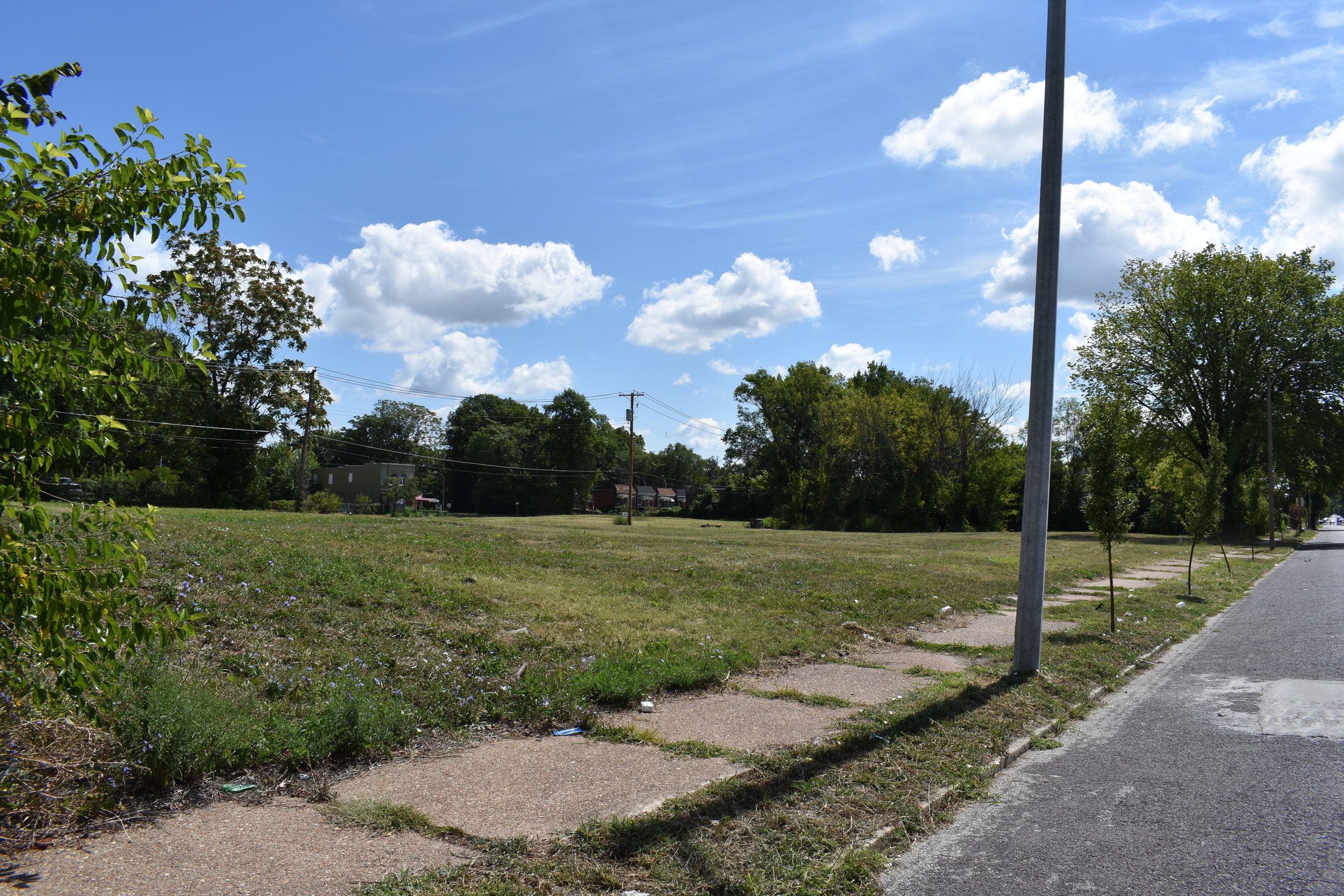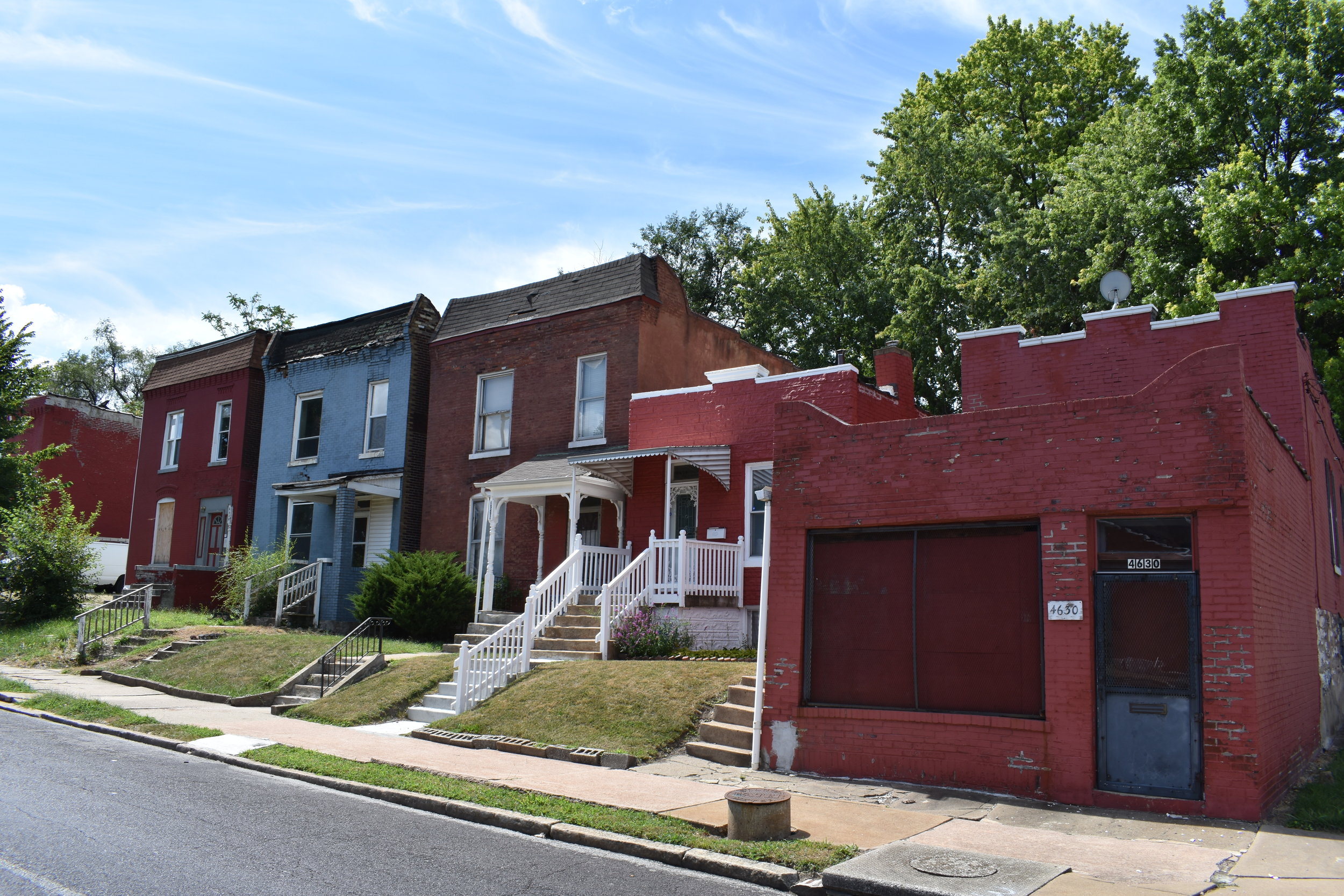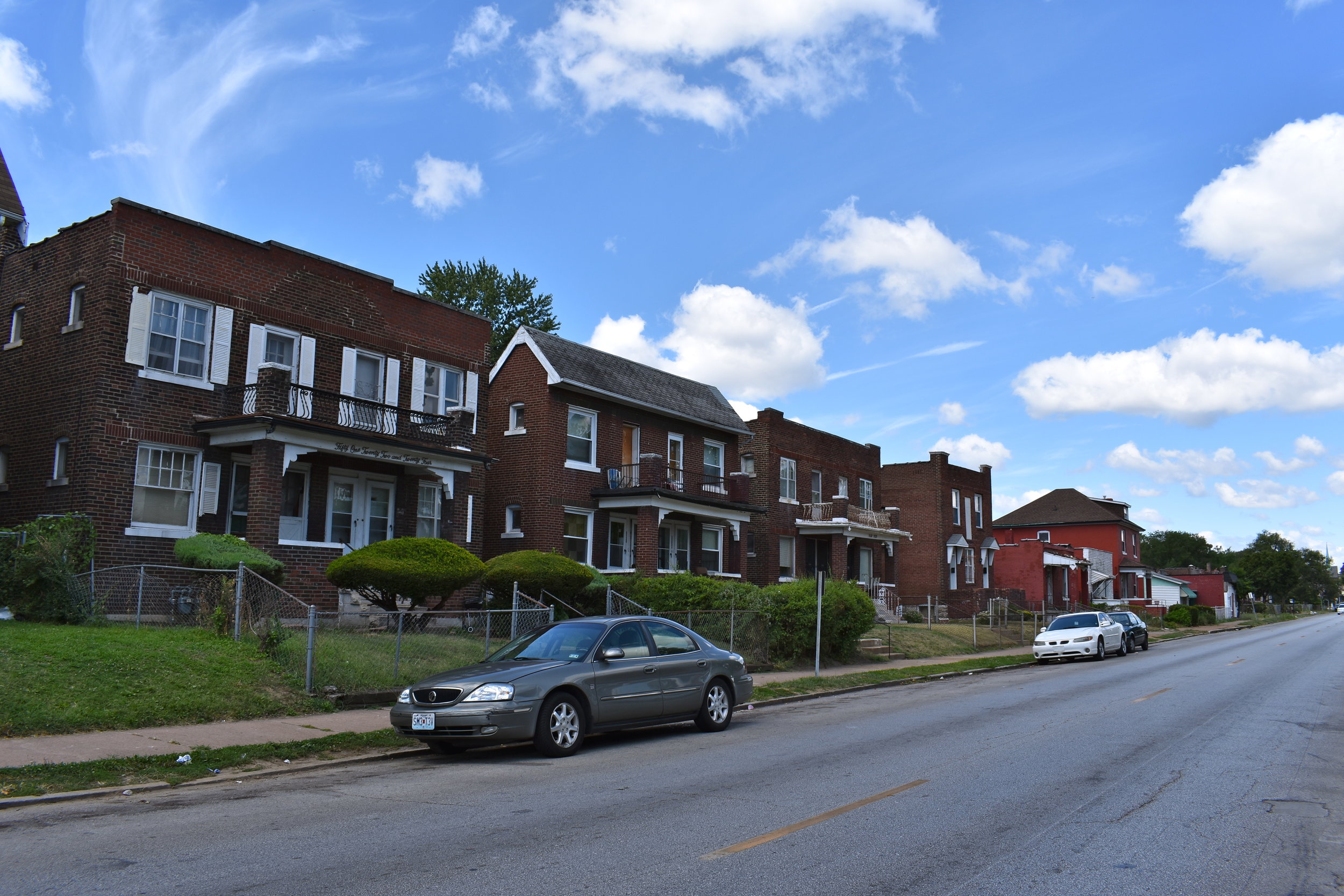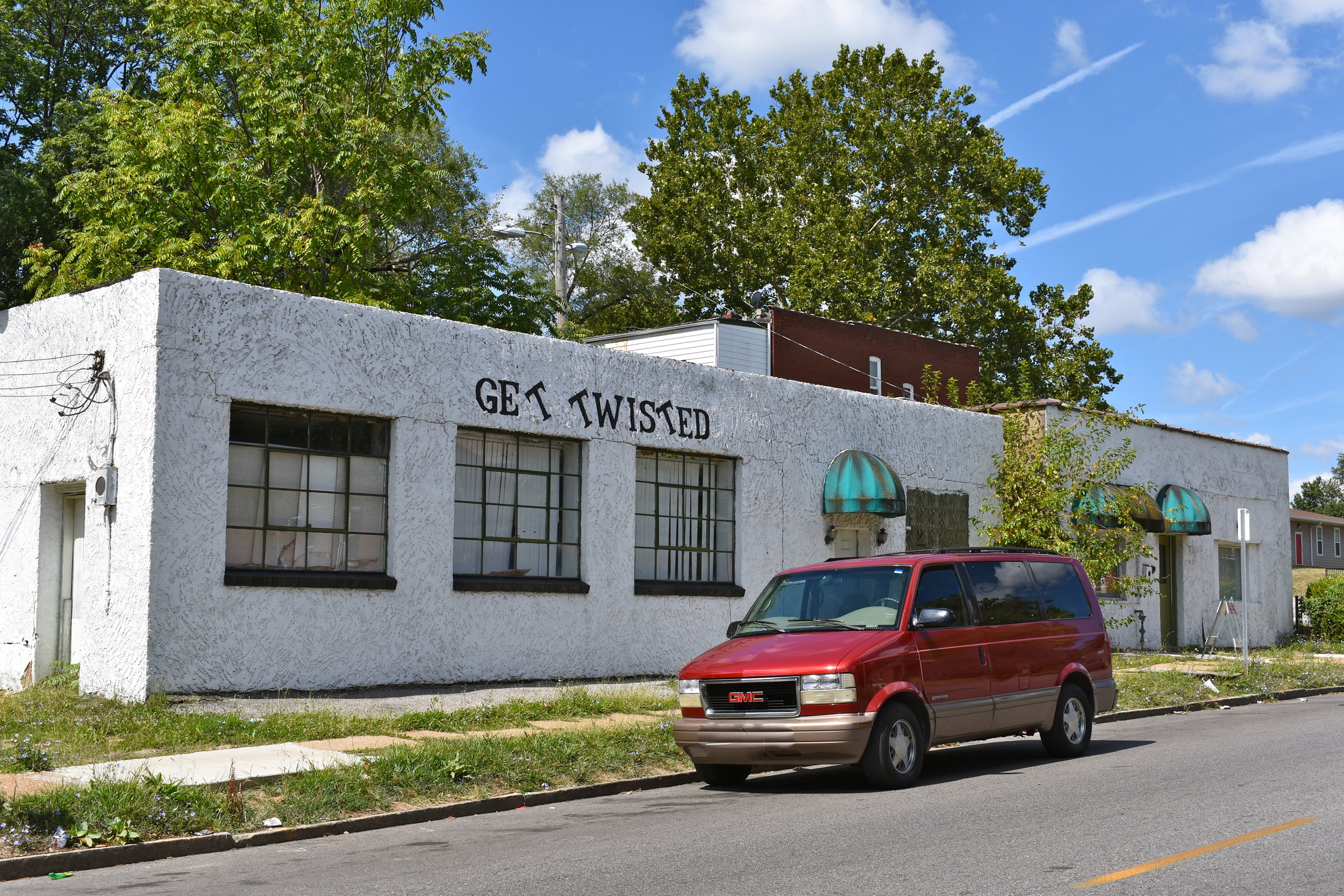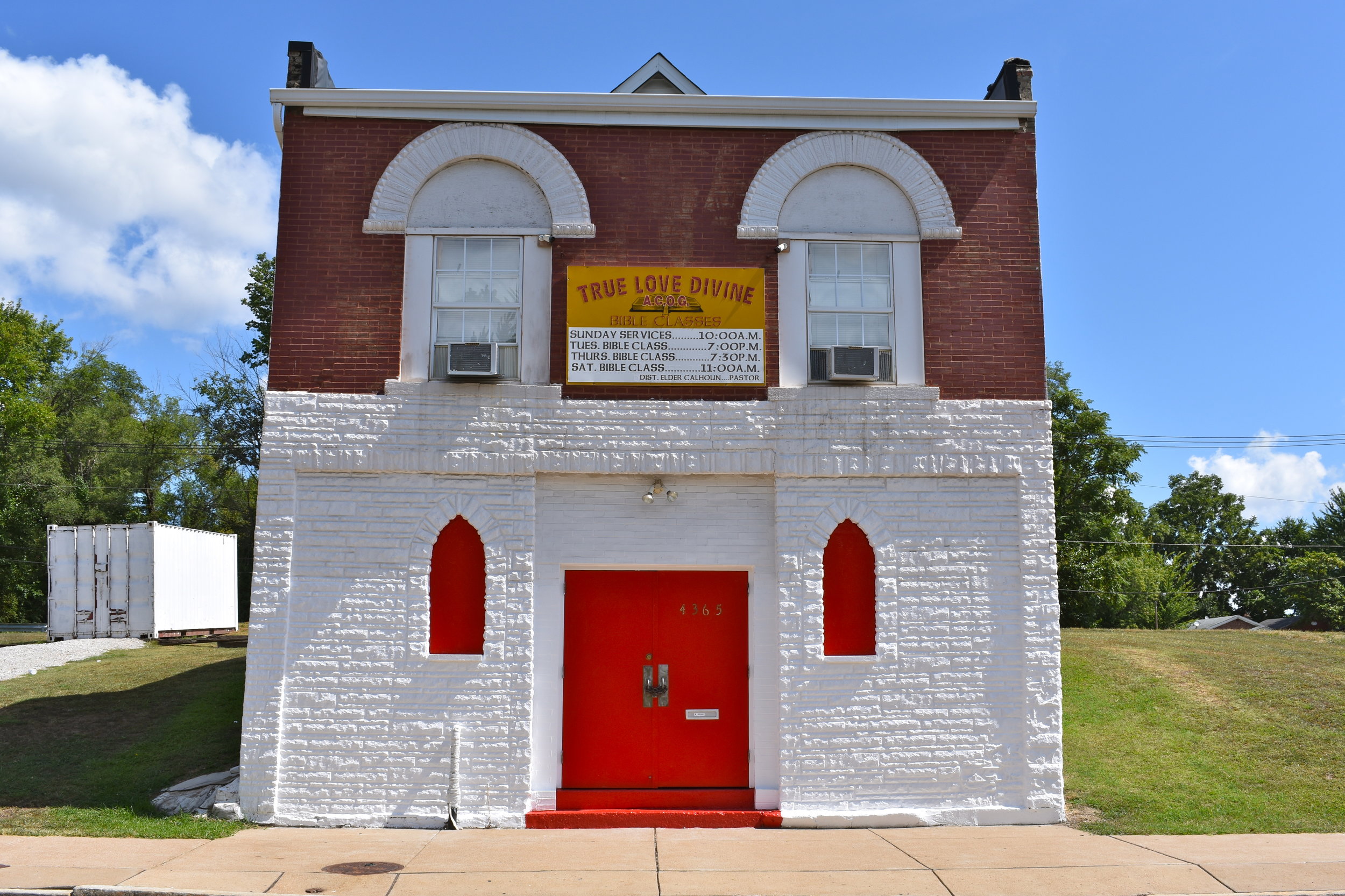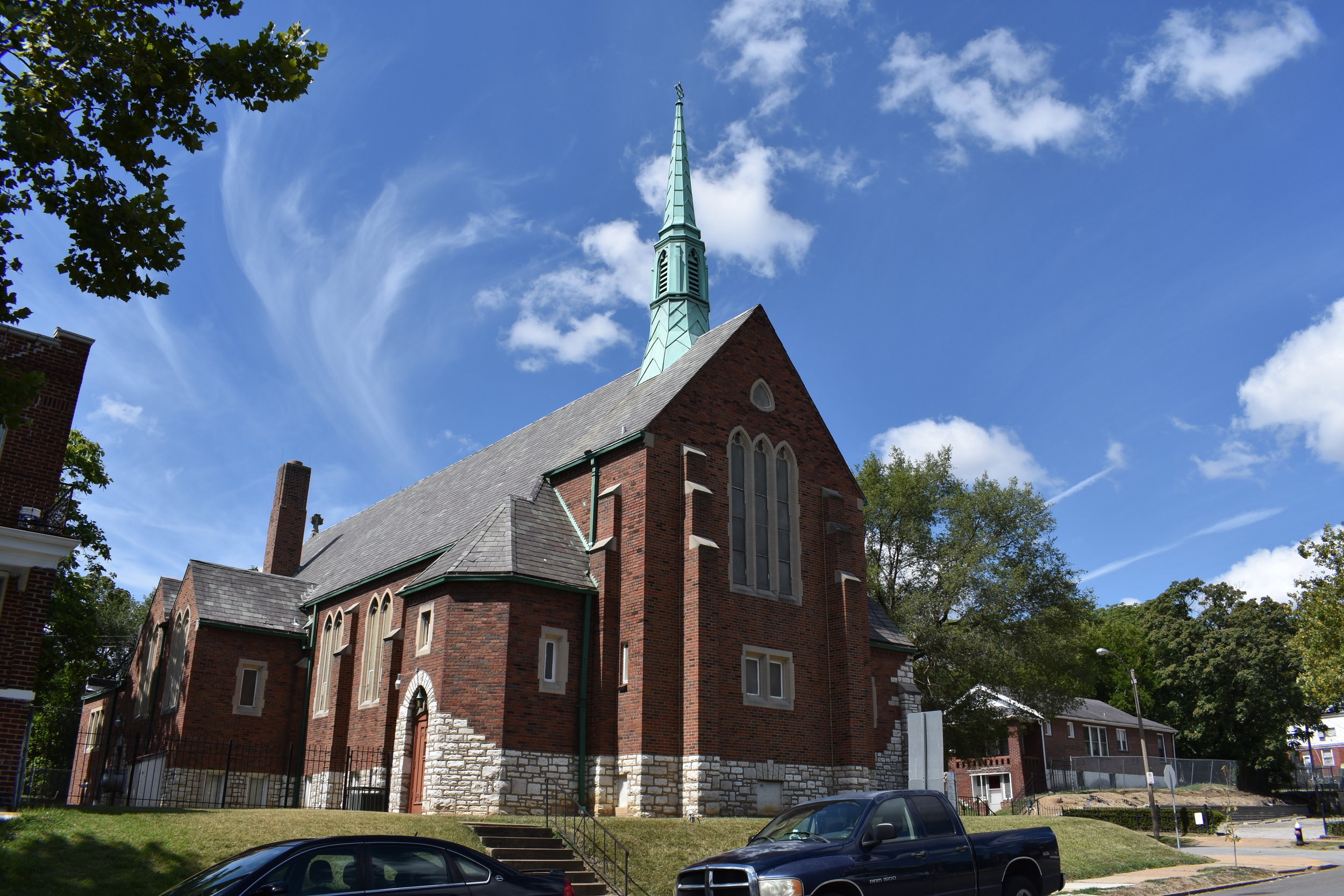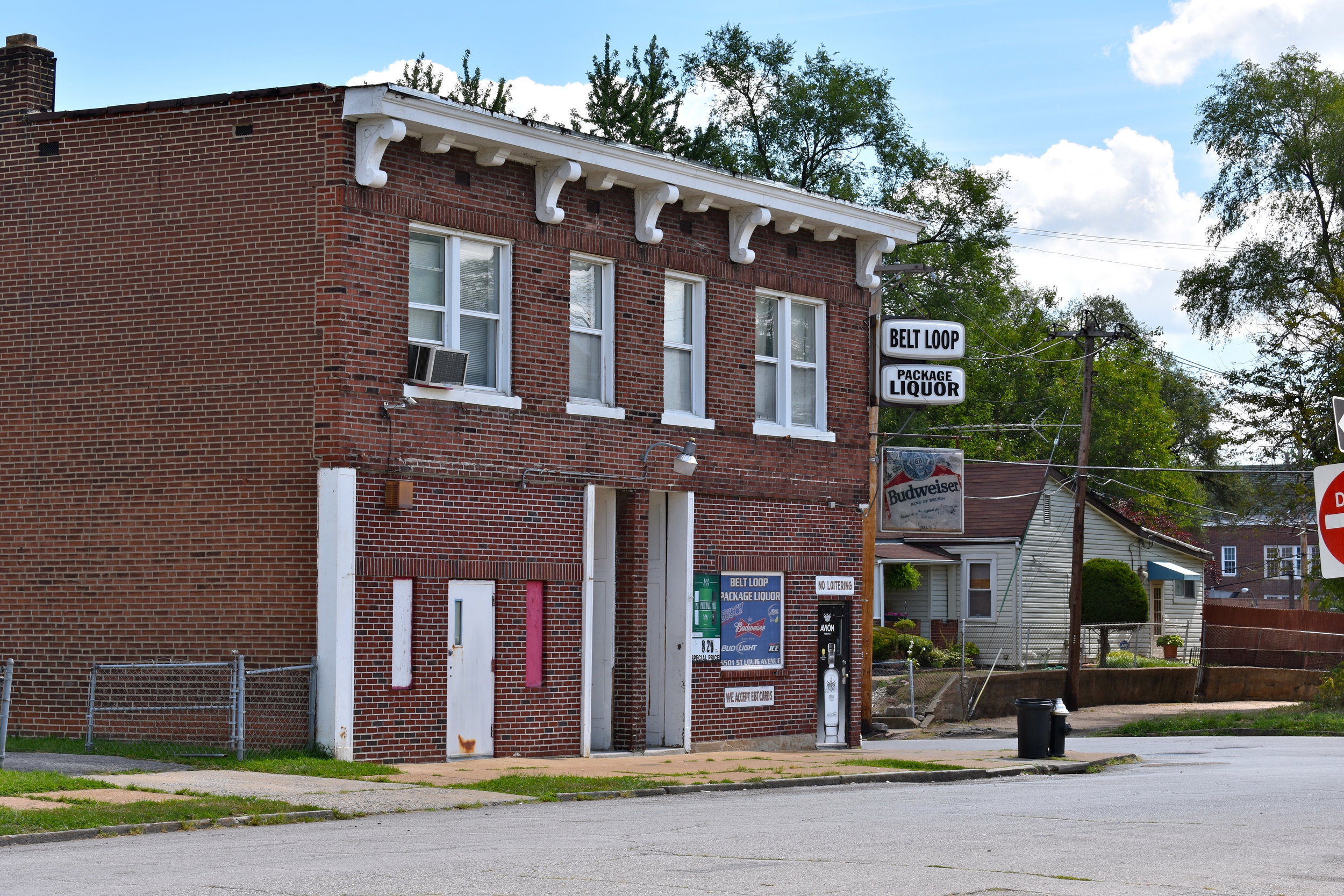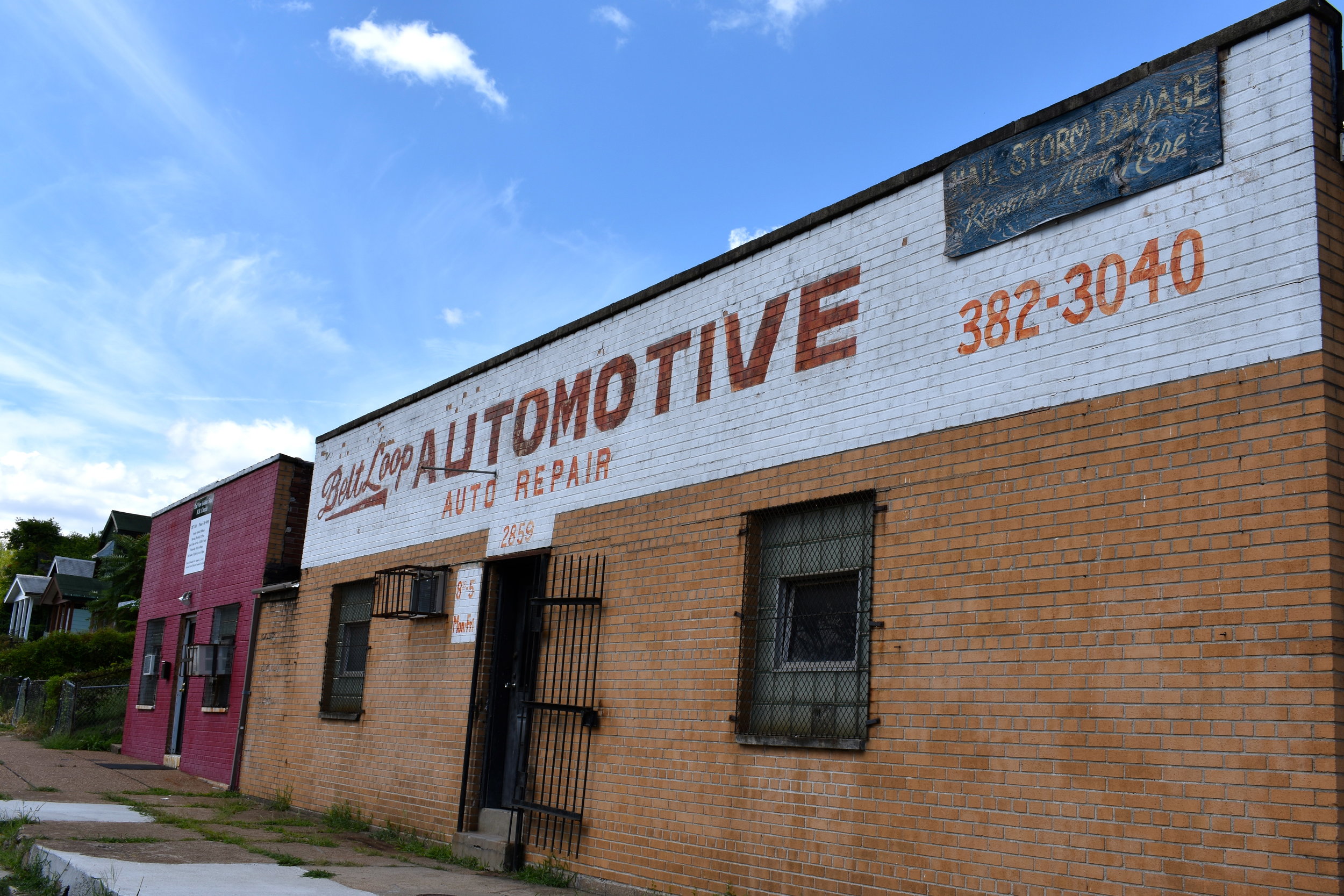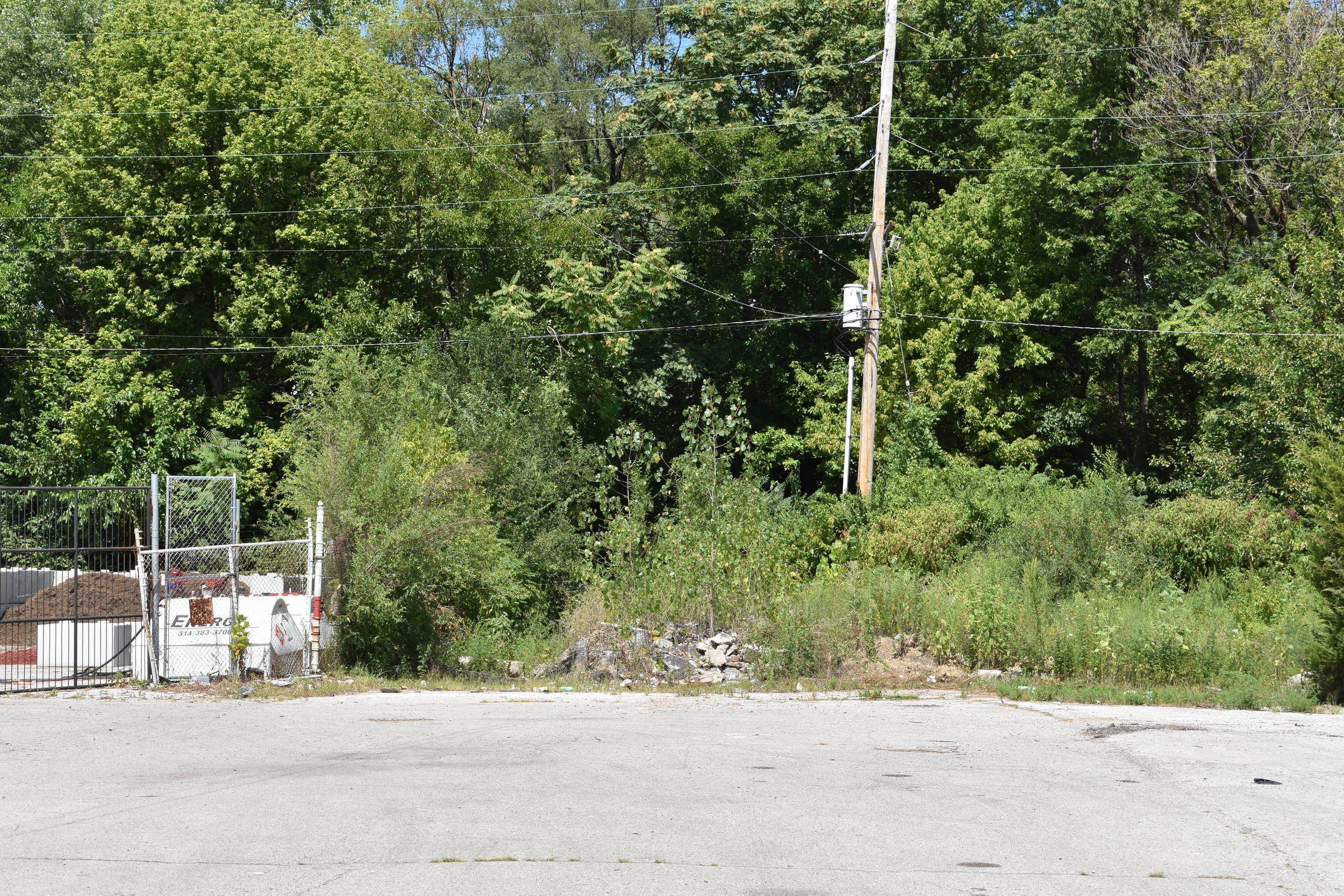Back in July with a long scooter ride through the Carondelet and Patch neighborhoods, I had South Broadway on my mind. That street is brimming with potential. Lying in wait for more committed people and more money. It's like it's mothballed and waiting to explode into St. Louis' most unique commercial district.
Not long after that I tweeted out a question:
I got several good replies on the east/west question. Chippewa, Gravois, Meremec, all good choices, but one really made me think: St. Louis Avenue. Now I agree, that is a beauty and I must admit I don't know it like the back of my hand like some of the South City suggestions.
Seems like the perfect candidate for Scooter Ride #4.
When I was doing neighborhood blogs several years ago it was the first time I'd been to some of those areas. That was the point.
So with the recent suggestion via Twitter that St. Louis Avenue is one of the best east/west streets with potential, I took off to ride the street with our namesake which spans nearly the entire city east to west.
Starting near the Mississippi River and terminating at St. Peters Cemetery in the small inner-ring suburban city of Hillsdale, MO just north and west of St. Louis, this street takes you though eight separate St. Louis neighborhoods including the Near North Riverfront, Old North St. Louis, St. Louis Place, The Greater Ville, The Ville, Kingsway East, Kingsway West and Wells Goodfellow.
There is a break in the street and it picks back up in Hillsdale, MO.
For my ride, I chose to start at the eastern terminus and work my way west. I'll stop in Wells Goodfellow.
The eastern terminus of St. Louis Avenue is a chain link fence topped with barbed wire. This is a section of St. Louis brimming with potential, the warehouses and former factories on North Broadway are incredible. But, in the last couple decades, Broadway has been focused on trucking operations, so you'll see a lot of that.
There are several greenhouse and nursery wholesale operations that proudly call St. Louis home.
Heading west, you cross I-70 on a bridge and come to the first of many curiosities, the Munipal Bathouse #6. There is plenty of great discussion on this building including a blog by Cameron Collins published on NextSTL back in 2012 and an article from Joe Holleman from the St. Louis Post-Dispatch in 2015. This was built in 1937, it was the last of six built and was in operation until 1965. The PD article states the building is owned by the family who operates Crown Candy just down the street. Read these two articles and try to picture life in St. Louis before indoor plumbing. Fascinating articles and analysis on both accounts. So happy it's still here for us to remember our past.
Here it is:
Across the street is Ames School, a pre-K - grade 5 magnet school which opened in 1955 and is focused on the visual and performing arts. It serves 402 students, 98% of whom are black. (source). There are some turqoise panels amongst the blonde bricks in tribute to the arts theme on the side of the building facing St. Louis Avenue.
Just west of here are some great commercial buildings, some still in use, some not and of course Crown Candy Kitchen and the 14th Street commercial district, both St. Louis treasures.
Just west of Gina's Bar with the Budweiser sign on the side at 19th Street, we take one of several downturns. There is a tremendous amount of former homes and commercial buildings that are in various states of decay from abandoned to falling to the ground. Brick theft and the decay of the elements is on full display. Much empty space in the form of vacant lots were evident on this ride. It get worse in places along St. Louis Avenue, but this is one of the bleak spots.
Things turn amazing once again just west of 20th Street when you get to the Polish Falcons of America, Nest 45, est. in 1905. They are hosting a Polish Festival Sept 9th if you are so inclined.
“Polish Falcons of America (PFA), one of the nation’s leading Polish-American organizations, is an ethnic fraternal benefit society with over 21,000 Members nationwide. Since its inception, the Polish Falcons of America has provided for the physical, social, cultural and financial welfare of its Members. From its origins in the great immigrant movement of the last century, to the demands of today’s fast-paced world, the PFA has a rich history of promoting physical fitness, cultural programs and family-based activities.
Under its time-honored motto of “w Zdrowym Ciele, Zdrowy Duch” - “A Healthy Spirit in a Healthy Body,” the Polish Falcons offers a wide range of programs for its Members. These include charitable and social events, sports activities and educational programs, some of which promote our rich Polish heritage. The Falcons also support various youth camps, athletic tournaments and competitions. Based on the “Nest” or lodge system, the Falcons invites as Members any individual who is of good moral character, and who is supportive of the organization’s values and ethnic ideals.”
St. Louis Avenue then bisects St. Louis Place Park, a long, narrow park.
Then you come to one of the grand spectacles known as "Millionaire's Row". This ~three block stretch of St. Louis Avenue is stunning. Various takes worth reading exist from VanishingSTL and the Preservation Research Office. The latter blog from Michael R. Allen indicates ownership of one Paul McKee who owns so much important stock in North City and has sat and shat on it. He's just the latest in a long line of suburban slumlords to sit on property, let it decay, fall and wait for some big grab rife with tax breaks and incentives that bring suburban dreams to our city. I was so hopeful at one point. Years later, I'm hopeless and find this guy one of St. Louis history's biggest scoundrels. There is time for him to redeem himself with more than he's proved to date, but time is running out. His inactivity has cost us so much...most recently the Clemens House with ties to Mark Twain. You can read this guys take on the fire here....let it be clearly known he has done nothing to stabilize, invest in or protect his properties from the elements and squatters/trespassers. This guy.
Today the George B. Vashon African-American Museum "spanning 250 years of African-American history in St. Louis" occupies space amongst the remaining mansions.
Then around 25th Street you come to a former bowling alley, now in use as an automotive repair/body shop and the Griot Museum of Black History.
“Only the second of its kind in the country, The Griot Museum of Black History opened as The Black World History Wax Museum in February 1997. In 2009, we hit upon what seems to be the perfect name “The Griot Museum of Black History” (“The Griot”). In some African countries, the “griot,” (pronounced “GREE-OH”) is a highly respected member of the community who collects, preserves and shares the stories, objects, and cultural traditions of the community. Our new name more accurately reflects what we do — collect, preserve, and share the stories, culture, and history of Black people - particularly those with a regional connection to American history. ”
As a guy who spends a lot of time in bowling alleys in the small towns around St. Louis, I'm always encouraged by the love of the sport from the black community around here, yet flummoxed by the fact that there are no bowling alleys in the black neighborhoods of St. Louis. So it goes. I think a bowling alley would be a hit in these parts of my fair city.
Heading west to the intersection at Parnell, you have a desolate corner where original building stock changed to auto-centric business and now is long closed and vacant.
Vacancy and neglect are on full display until about Glasgow Avenue.
You come to Columbia School for the Gifted, the newest "gifted learning" magnet school. This is the first 100% black gifted program. I blogged about this school in May, 2017. One of the things we experienced in the gifted magnet grade schools was the quality and caring families or all races and backgrounds. I hope this school is a beacon of success as the other two gifted magnets and we build a stronger community around Columbia School...time will tell. I'm hopeful.
Eventually you come to Grand where there are a couple gorgeous corner buildings.
The U.S. EPA superfund cleanup is nearly complete to remove the contamination at the former Carter Carburetor plant.
“The Carter Carburetor Site, 2840 N. Spring Avenue, in St. Louis, Mo., was operated by the Carter Carburetor Corporation and Carter Automotive Products, both of which were subsidiaries of ACF Industries, Inc. from the 1920s until about 1984. The plant consisted of several connected multi-story manufacturing, testing, office, and warehouse buildings that contained approximately 480,000 square feet of space. During its operational life, the plant manufactured carburetors for gasoline- and diesel-powered engines. In 1984, ACF Industries, Inc. closed the plant and dismantled much of the equipment.
Although numerous chemicals were used in the plant’s manufacturing process, the primary environmental contaminants that remain at the site include polychlorinated biphenyls (PCBs), trichloroethylene (TCE), and asbestos.”
More abandonment and crumbling buildings near the former plant.
Then, you get to Bishop PL Scott Avenue, by the church with the catwalk through Sarah Avenue is pretty solid with stately tree lined scene.
Evetusally you come to William B. Ittner former school called Simmons/Marshall. It was in operation from 1899-2009. It was named for Baptist clergyman and educator William Johnson Simmons (1849-1890). It is now for sale by the St. Louis Public Schools, listed at ~$614,000.
Then it takes another turn for the worse, there long stretches of vacant lots and residential properties with NO TREES. This is an easy fix to help residents out with shade and safety. I've never understood why this is not addressed by the local communities and, I guess the aldermen and Forestry Dept.
It really makes the city look worse when there is no relief between the streets and the sidewalks.
Beautiful churches exist in all shapes and sizes along St. Louis Avenue. Some are in use, some long abandoned.
A mid-20th-Century suburban sub-division called Norwood Square stands out. Somebody decided to drop the Brady Bunch in the middle of a working class city.
There are signs of bulldozers on sites in some blocks where mass demolition and clearance is taking place. Go get your photos is you are interested, the St. Louis brick architecture is disappearing once and for all.
You eventually come to a place with one of the coolest names in the city, and I don't remember documenting it in the past: "The Belt Loop". Of course this is likely the Belt Avenue circle by St. Louis Avenue where the streetcars turned around. There are still signs of this history hanging around:
You eventually come to Barrett Brothers Park which was activated on my visit with a massive local radio station sponsored party, it was a good scene and nice to see the park in use.
The area around the park looks like the Hill or Southampton. And then you reach the western terminus of St. Louis Avenue at some railroad tracks. This scooter ride started at a wholesale nursery and ended at a landscaping company.
It picks up in the suburbs on the other side of the tracks.
St. Louis Avenue is a great St. Louis street. It is a grand tour from nearly the river to the western edge. It is a good look at our history, our current state and a thought experiment for our future.
Back to my original question: what streets have the most potential? Well potential is undoubtedly here. And the history on and around St. Louis Avenue make it a top 10 for me personally. But based on our Census data from the last 20 years, the African-American community that has occupied these neighborhoods in the last 40-50 years are leaving in droves. I'm concerned about the future of this important street and I think it will continue to disappear as brick rustlers and bulldozers become the solution to years of neglect and deferred roof and wall maintenance on residential and commercial properties.















